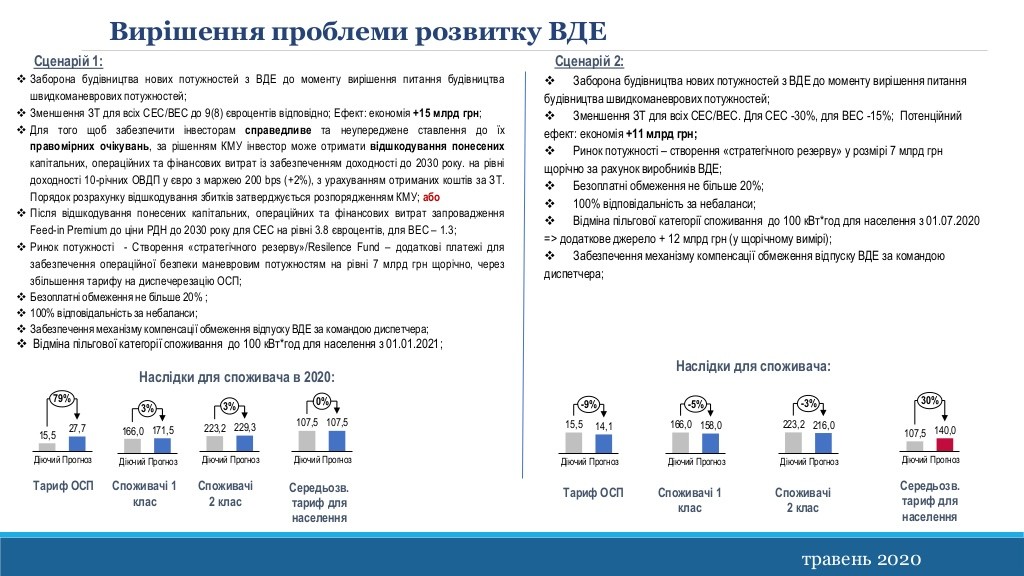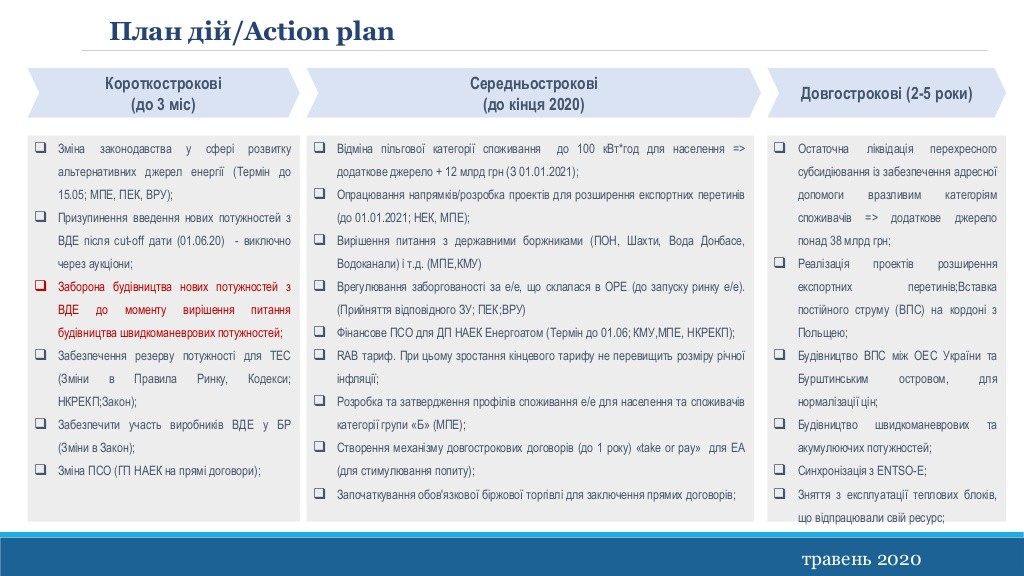How to save on space heating
Electricity and solid fuel boilers: forecasts, prospects, solutions.
The Committee on Energy, Housing and Utilities recently held a roundtable discussion on how to overcome the crisis in Ukraine's energy sector. Members of the Committee, representatives of relevant ministries, agencies, organizations and enterprises gathered to discuss this issue. It is no secret that the energy sector crisis is, unfortunately, not a new phenomenon. Today, it has been deepened by a sharp drop in consumption caused by the coronavirus epidemic.COVID-19and a decline in industrial production. Against the backdrop of this decline, a surplus emerged in the power system, which led to both an imbalance in the system and a disruption in the functioning of the electricity market as a whole. Against the backdrop of reduced consumption, there is a drop in the unevenness coefficient, or the difference between the nighttime minimum and the evening maximum. There is also a decline in the generation of hydroelectric power plants (the lowest water content in 140 years of observations was recorded).
Another reason for the aggravation of the crisis in the energy sector is the so-called "green" energy boom. In order to encourage private households or businesses to produce electricity from alternative sources, the government has developed a special mechanism - the "green tariff" - a tariff at which electricity generated by electricity facilities using alternative energy sources (hydroelectric power plants, solar, wind or biological plants) is purchased. What's the point? You install a solar power plant at your home, enter into an agreement with the state, under which it undertakes to buy the surplus energy produced from you at a much higher price than from traditional thermal or nuclear power producers. Today, the total share of energy from renewable sources (RES) is about 2% of the total amount. At the same time, its cost reaches 8% of the electricity market turnover, or about UAH 10 billion at the highest tariffs in Europe.
The tariff is pegged to the euro and was approved by the National Energy and Utilities Regulatory Commission (NEURC, the Regulator) by Resolution No. 725 dated 25 March 2020 (effective from 1 April 2020):
- from solar radiation energy by generating installations up to 30 kW and put into operation from January 1, 2020 to December 31, 2024 - 460.43 kopecks/kWh (excluding VAT).
- from wind energy up to 30 kW and commissioned from July 1, 2015 to December 31, 2019 - 329.31 kopecks/kWh (excluding VAT).
- from wind and solar energy on combined wind-solar generating systems of private households with an installed capacity not exceeding 50 kW and commissioned from January 1, 2020 to December 31, 2024 - 347.61 kopecks/kWh (excluding VAT).
RES are developing at the most dynamic pace compared to other types of generation. And if this continues, they will be able to displace other types (nuclear and thermal) in about 2 years.
However, it should be understood that green energy cannot replace traditional energy. Traditionally, fossil resources are currently the most popular in Ukraine: natural gas and coal, which together account for more than 60% of the domestic energy balance.
On April 28, the Ministry of Energy and Environmental Protection of Ukraine approved a new forecastbalance of electricity for 2020.
According to this document, electricity production is planned to be reduced at all power plants in Ukraine, except for thermal power plants and renewable energy sources. The overall decrease is 5.9% (to 143 billion kWh) compared to the previous version of the balance sheet. The largest decrease in electricity production will be at nuclear power plants by 8.6% (to 73.7 billion kWh), at thermal power plants by 7.8% (to 38.9 billion kWh), and at hydroelectric power plants by 4.8% (to 4.85 billion kWh). Production at CHPPs will be almost at the same level (11.1 billion kWh), and production of the most expensive type of electricity from renewable sources should increase by 1.12 billion kWh (up to 11.4 billion kWh).
As of the end of May, 10 out of 15 power units were in operation at Ukrainian nuclear power plants. The available capacity of NNEGC Energoatom is 9470 MW, and the current capacity is 6610 MW. That is, the limit of nuclear power plants is 2860 MW.
In fact, this decision reduced the production of the cheapest nuclear electricity (56.67 kopecks per 1 kWh), which is in state ownership, in favor of private and expensive types of electricity - "green" and thermal (which, by the way, is unecological). Thermal power plants are fired by coal, the price of which in Ukraine is about $70 per ton, while in Europe its price is 2 times lower. The main assets in coal mining, electricity generation and distribution are owned by DTEK, Ukraine's largest energy holding company, which is majority owned by Rinat Akhmetov. The company also has a 22% share in the renewable energy market. Given this situation, there are statements in the press that the government is lobbying for the business interests of a private company that will be able to maintain its production at a high level, while artificially limiting the generation of state-owned enterprises.
In order for the electricity market to be competitive, all types of energy need to be balanced, and the balance should not be distorted. Today we are witnessing an excess of power generation.
A sharp increase in the production of expensive renewable energy and a decrease in the production of cheap electricity by hydroelectric power plants and nuclear power plants led to the debt of the State Enterprise Guaranteed Buyer to renewable energy producers in the amount of UAH 3.1 billion as of April 1, 2020.
According to the Energy Strategy of Ukraine "Security, Energy Efficiency, Competitiveness", Ukraine is expected to have a surplus of generating capacity by 2025, and after 2025 it will face the need to upgrade it. In terms of the possibilities of reconstruction of thermal power plants, taking into account environmental requirements and the extension of the life of nuclear power plants, these types of energy generation will remain quite efficient in the near future. To meet demand by 2025, it would be enough to extend the lifetime of 6 GW of NPPs and 9 GW of TPPs. At the same time, in addition to meeting demand in the short and medium term, the strategic task for the next ten years is to prepare Ukraine's energy system for a large-scale capacity upgrade after 2025.
The uncontrolled growth of renewable energy producers and its imperfect pricing have turned the green tariff into a burden for the state budget, while for some it has become a source of excessive profits. In total, "green" energy has attracted about 4 billion euros of foreign investment to Ukraine.
At the roundtable, the Regulator presented its vision of solving the problem of RES development. Two scenarios and an action plan were proposed:


Both scenarios envisage the abolition of the preferential tariff for households for the first 100 kW of electricity (scenario 1 - from 01.01.2021, scenario 2 - from 01.07.2020), which currently amounts to UAH 0.9/kW, and its increase to UAH 1.68/kW. This will help generate UAH 12 billion annually as a source of additional income. In the long term (2-5 years), the government is considering raising the price of electricity for households to the level of industry, abolishing cross-subsidization, and providing targeted assistance to vulnerable consumers. This will help to generate additional UAH 38 billion.
Such statements have caused concern among electricity consumers, who are quite sensitive to utility bill increases. Especially against the backdrop of constant talk about rising gas prices, as well as when it was decided to increase tariffs for water supply and sewerage. As a result, we can talk about rising electricity prices as well.
As assured by the Chairman of the Committee on Energy, Housing and Utilities Gerus, electricity tariffs will not be increased until the end of 2020. However, it should be understood that this is temporary and there are no other alternatives to equalize electricity prices for consumers and businesses. Utility bills still tend to increase.
We think that every household wants to be as independent as possible from such tariff fluctuations and to allocate their family budget economically, without spending extra money on heating.
Let's try to calculate the costs of a household owner for a month of the heating season for the three main types of fuel: solid fuel, gas, and electricity. The heated area is 100 m2 . For such a quadrature, the Classic 12 kW solid fuel boiler by Altep is ideal. To calculate the fuel requirements, let's take the average cost data for the heating season.
|
Type of fuel |
Demand per month |
Price, UAH per unit. |
Cost, UAH/month |
|
Solid fuel (firewood) |
2,3 |
500 |
1150 |
|
Gas |
500 |
4[1] |
2000 |
|
Electricity |
4680 kW |
1,68 |
7862,4 6552 [2] |
[1] - tariff plus the average cost of delivery.
[2] - using the nighttime electricity tariff.
The numbers speak for themselves. Unfortunately, not all citizens can receive a subsidy for housing and utility services, as there is a long list of conditions that must be met. So how do you avoid becoming a hostage to high heating tariffs? Do winter utility bills hurt your wallet? There is a solution! Install a high-quality Altep solid fuel boiler, which will become a source of heat for your home regardless of tariffs.
By choosing Altep, you get reliable and easy-to-use heating equipment with high efficiency, as well as the ability to use different types of solid fuels for your convenience.
Your energy independence is Altep!